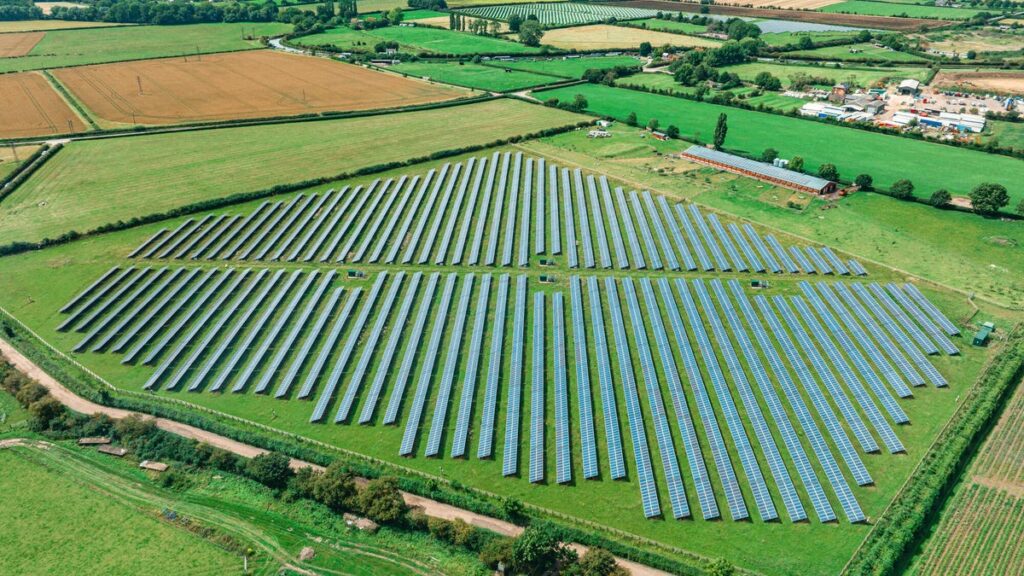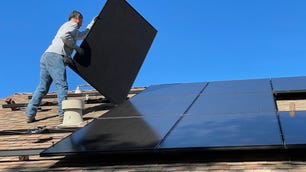If you can’t afford solar panels, you can still go green with solar power, as long as you live in the right place.
Community solar is a model of purchasing electricity that allows you to order electricity produced by a large solar array or farm located at another location in the utility’s service area.
Utilities often initiate community solar projects, but in some areas they may be operated by third parties. States that require a portion of their energy mix to come from local community solar also generally have more programs.
The federal government also included program funding in the Inflation Reduction Act and is pushing hard to make it easier for low- and moderate-income households to benefit from measures to reduce their monthly energy bills. Recently, the federal government allocated $7 billion to build “Solar for All” programs across the country. While it will take time for grantees to use the funds, the promised results should include programs in all 50 states and some U.S. territories, including Puerto Rico and Guam.
However, some utility-sponsored community solar programs may actually increase your energy bills, proving that not all solar subscriptions are created equal. It’s always important to know who is running your local plan and how much it might cost you.
The Solar Energy Industries Association estimates that as of the first quarter of 2024, 6.5 GW of community solar has been installed in the United States. These projects are located in 41 states and Washington, D.C., 19 of which have official policies and programs in place to encourage more community solar generation. SEIA expects community solar power generation to double over the next five years.

look at this: You May Not Notice Your New Solar Shingles
What is community solar?
Daniella Gray, director of customer relations at Altus Power, develops and operates community solar projects across the country.
“Every situation will be different, depending on who we work with,” she explains. “Maybe someone has some extra roof space that they’re not using for anything else and that’s a good candidate for solar.”
Altus might then lease that rooftop space and sell the power to users in the community.
“These panels are connected to the local utility grid … and the clean energy generated is sent directly to the grid, so the community does benefit from more clean energy.”
Users benefit from these programs because the renewable energy produced is cheaper, in part due to subsidies and incentives from local, state and federal governments.
Community solar by state
Many states have implemented laws that enable community solar programs and force utilities to incorporate them into their energy mix. Other states go further and require a certain amount of community solar to be installed within a set period, while others provide funding for projects.
The National Renewable Energy Laboratory compiled the most comprehensive community solar data in the United States in January 2022. York and Massachusetts.
Interestingly, much of the community solar development is occurring in states such as Florida that have not yet passed any relevant legislation, and where utilities and electric cooperatives have taken action on their own. Below are details of project completion status as of December 2021, with the latest available data. Authorization and incentive information cited from the Department of Energy. The industry has been growing rapidly over the past two years, so many of these figures may have changed.
States with the most community solar power
States planning to implement community solar
The community solar landscape is growing and changing rapidly. New Mexico and Hawaii are among the states that have recently enacted community solar legislation and are likely to move up the list above in the coming years.
Most states that do not have community solar laws have at least introduced some kind of legislation in their statehouses. Michigan introduced a community solar bill in April but failed to advance in the state Legislature. Similar situations have occurred in Wisconsin, Pennsylvania, Alaska and Montana in recent years.
Gray said the move by the California Legislature is expected to make community solar more feasible in the most populous state, and a long-term plan in Minnesota is undergoing similar changes.
Sixty grantees from the federal government’s Solar for All program will also establish community solar across the United States. There are 49 state grantees and 5 interstate grantees that will provide varying levels of coverage across the country.
“Many of the 60 selected Solar for All applicants are already supporting low-income and underserved communities with innovative programs that Already bringing clean, affordable solar to homes “With this new funding, Solar for All selected applicants can launch thousands of similar projects in every state and territory across the country. “
How to join a community solar program
Gray said getting involved in community solar is as simple as contacting a provider to see if they work with your local utility. If the answer is yes, all you need to do is provide your utility account information. The final step is to sign the contract and finalize payment arrangements (if the community solar program has not already consolidated bills with your utility company).
Many electric cooperatives are early adopters of community solar, while investor-owned utilities often have to be forced through state legislation, said Brandon Smithwood, senior policy director at community solar company Dimension Renewable Energy. Use a similar plan.
“Only a few people can actually put solar on their roofs, and community solar is an option for everyone else,” he said.
In most cases, community solar credits will only show up on your monthly utility bill, just like a monthly discount or rebate. At times, subscribers may have to pay their monthly utility and community solar plan bills, but the points will still be applied to their energy bill, providing a net savings.
EnergySage offers a tool that allows you to search for community solar projects by zip code.
“This is something that a relatively small number of Americans have access to, and it’s going to become a more common consumer product,” Smithwood said. “It’s a way to do good while also doing well.”
Advantages and Disadvantages of Community Solar
Community solar can be difficult to understand conceptually if you’re new to the subject, but it’s simple to get involved with the project. Still, there are some things to consider before signing up.
advantage
- Community solar replaces fossil fuels in the energy mix, resulting in cleaner air and lower carbon emissions.
- These programs are designed to reduce energy bills and particularly benefit low- and moderate-income households. (See a key exception below.)
- If you are a renter or are not allowed to install solar panels yourself, this is one way to benefit from solar energy.
- Community solar developers lease large tracts of land to provide farmers (and other property owners) with a source of income. “It’s a way to keep the nature of the farm and keep it in the hands of the family,” Smithwood explains.
shortcoming
- Gray said people often think community solar is a scam because it appears to lower utility bills and provide environmental benefits at no cost.
- In some areas, especially in the South, monopoly utility companies offer community solar, but not at great prices. “The way they’ve priced these products so far has been more of a premium product,” said Gil Kessel of the Southern Environmental Law Center.
- Without a unified billing approach, billing can be confusing and people have to worry about paying two bills related to their electricity usage.
Community Solar FAQs
How many states have community solar programs?
By 2024, 41 states and Washington, D.C., will have some kind of community solar program, but in many cases the program’s availability still requires participation from individual local utilities.
Can you make money with community solar?
Community solar rarely nets you actual cash, but its benefits include reduced monthly energy bills, credits, or rebates.


